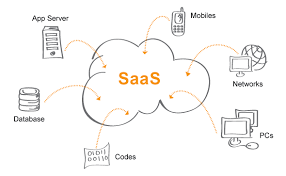A relatively new concept called SaaS (Software as a Service) allows businesses to purchase remote programming rather than purchasing it and installing it on their own computer hardware.
We'll use this article to explain what SaaS mode is and what its advantages and disadvantages are. also what distributed computing entails.
Meaning of SaaS mode
The SaaS model allows businesses to purchase online programming at a variable cost based on actual employee utilization rather than launching apps on their own servers.
Activity in SaaS mode
The company won't have its own applications or internal data storage by utilising the SaaS model.
Therefore, it is not necessary to just download these applications and have servers in order to have them. Additionally, the expert co-op will manage the support and upgrades of the applications remotely.
Business clients will only need a PC and access codes for online support in order to be able to work.
The benefits of SaaS mode
In the SaaS model, the board enables an organization to gain from a number of advantages:
No product needs to be installed on business equipment, no data is stored there, no programmed need to be updated, and the application can be used whenever and wherever: The executives in SaaS mode provide a level of security that is typically higher than internal administration with only a simple web connection and a PC.
By taking use of the first two advantages mentioned, the company can also cut costs on these investments in PC hardware.
SaaS is a service, and its cost establishes a cost that is immediately deducted from the business's conclusion, as opposed to a venture, which is deducted from the result through devaluation distributed over a long period of time.
The drawbacks of the SaaS model
The SaaS, nonetheless, presents a few disadvantages, including:
The business depends on the professional co-op that provides the help, the last choice owning the applications, and enabling the organization's information. What would happen if you didn't have it? Looking for financial security? or on the other side, what if a query comes up?…
The cost of operating in SaaS mode for applications often used by the organisation and by a few clients might be significantly greater than protecting the application, making it difficult for the organisation to switch suppliers and migrate the information to it at that time.
Differences in distributed computing
Distributed computing and SaaS are two concepts that can be compared, however that doesn't really signify anything for something similar.
The organisation will be able to take use of an entire IT framework and use apps remotely thanks to distributed computing. Due to the pooling of resources, this activity has no restrictions on capacity or transfer speed.
The SaaS currently just serves to provide an online application with a membership.
As a result, distributed computing is a much bigger concept than SaaS and includes setting up the following four services via the internet: applications, information storage, application execution, and foundation.








No comments:
Post a Comment